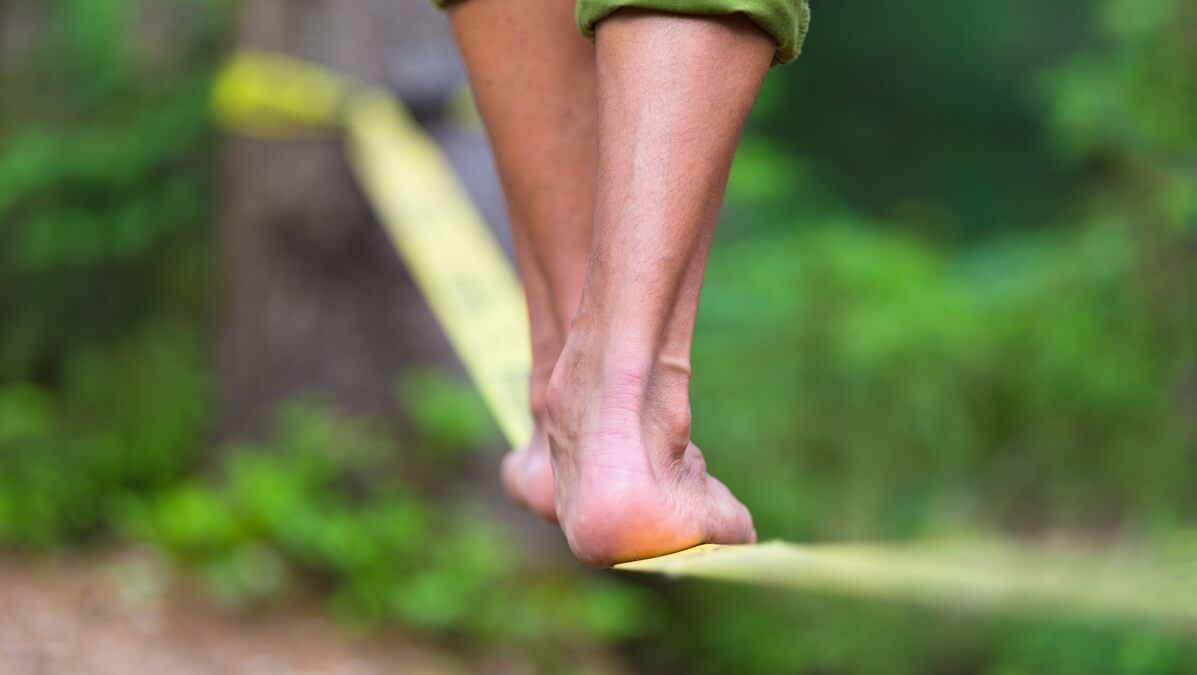We’ve all taken a tumble at some point in our lives. But as we get older, the risks associated with falling over become greater: we lose physical strength and bone density, our sense of balance deteriorates and we take longer to recover from a fall.
Alarmingly, this process starts around the age of 25. The reasons for that are varied and complex, but by understanding them better, we can find ways to mitigate the effects of older age.
The first thing to know is that the human body is inherently unstable, with a small base relative to its height. Maintaining an upright position and moving from place to place while staying balanced is a continual challenge for our bodies. Success depends on the wellbeing and integration of many different systems within our bodies.
Three main systems provide the sensory information about our bodies and the surrounding environment required to maintain balance. These are the visual (eyes), vestibular (inner ear and semi-circular canals) and somotosensory (sensation feedback from joints in ankles, knees, spine and neck) systems. To maintain balance, the brain must rapidly and continuously integrate and then process the sensory information received from these systems. This integration is often worse in older people who are prone to falls.
This unconscious process prompts finely tuned, coordinated responses from the motor and muscle systems as we, for instance, bend over to tie a shoelace or recover from a playful push from a friend – everyday incidents and movements that we adjust to usually without thinking.
Taking a tumble
Falls occur when the demands on postural control exceed the bodies’ capabilities. This might happen when your body’s pattern of movement is interrupted or changed by an unexpected hazard – for instance, when you trip. Or it could happen when your body is displaced beyond its support base and your attempt to correct the displacement is delayed, inadequate or inaccurate – for example, when you’re pushed forcefully.
Falls are more likely to occur as you get older. With age and inactivity, the unconscious processes your brain goes through to help you balance may not integrate as well or as quickly as they used to – in other words, your cognitive abilities decline.
As a result, maintaining balance and preventing harmful falls may require ever greater mental focus and prove more fatiguing.
Poorer cognition can also limit your ability to multitask – the ‘can’t walk and talk’ phenomenom.
Another result of ageing is that the quality of information provided by the visual, vestibular and somotosensory systems declines. Eyesight gets worse, with increased susceptibility to glare and poor depth perception. This can lead you to misinterpret the lay of the land, or misjudge distance, which can cause a fall.
The normal sensory feedback from your joints to the brain is reduced by swollen feet and ankles and poor flexibility. Diseases in weight-bearing joints, such as arthritis, may cause errors in foot placement, while distorted or painful feet and poorly fitted shoes can pass misleading information to the brain about the nature of your contact with the ground when walking.
Vestibular abnormalities such as vertigo or inner ear infections cause dizziness, which also increases the risk of falls. Certain commonly prescribed medications, such as aspirin, quinine and some antibiotics and diuretics, can lead to problems in vestibular function.
Age-related changes increase the likelihood of falls and that, in turn, can lead to a vicious spiral of inactivity. But accelerated by sedentary behaviour leads to a greater reduction in strength and balance, loss of bone and an increased risk of falls.
Never too late
The good news is that it’s possible to break this vicious circle and slow the process of deterioration, improve strength and balance and reduce the risk of future falls by being active.
We should all aim to be active every day and build up to 150 minutes of moderate exercise a week, which should make you feel slightly out of breath and a bit warmer.
That activity can be accumulated in 10-minute bursts. At least two of these short bursts should build strength and balance – examples include lifting weights, yoga, Tai Chi or postural stability classes, bowls and dancing. And it’s important to check that the instructor is trained to teach older adults if the person is new to exercise.
It’s never too late to start. By concentrating on forms of exercise that challenge strength and balance, we can help maintain our bodies’ complex balancing systems, and confine the time we become dependent on others.
This article was originally published on The Conversation.

